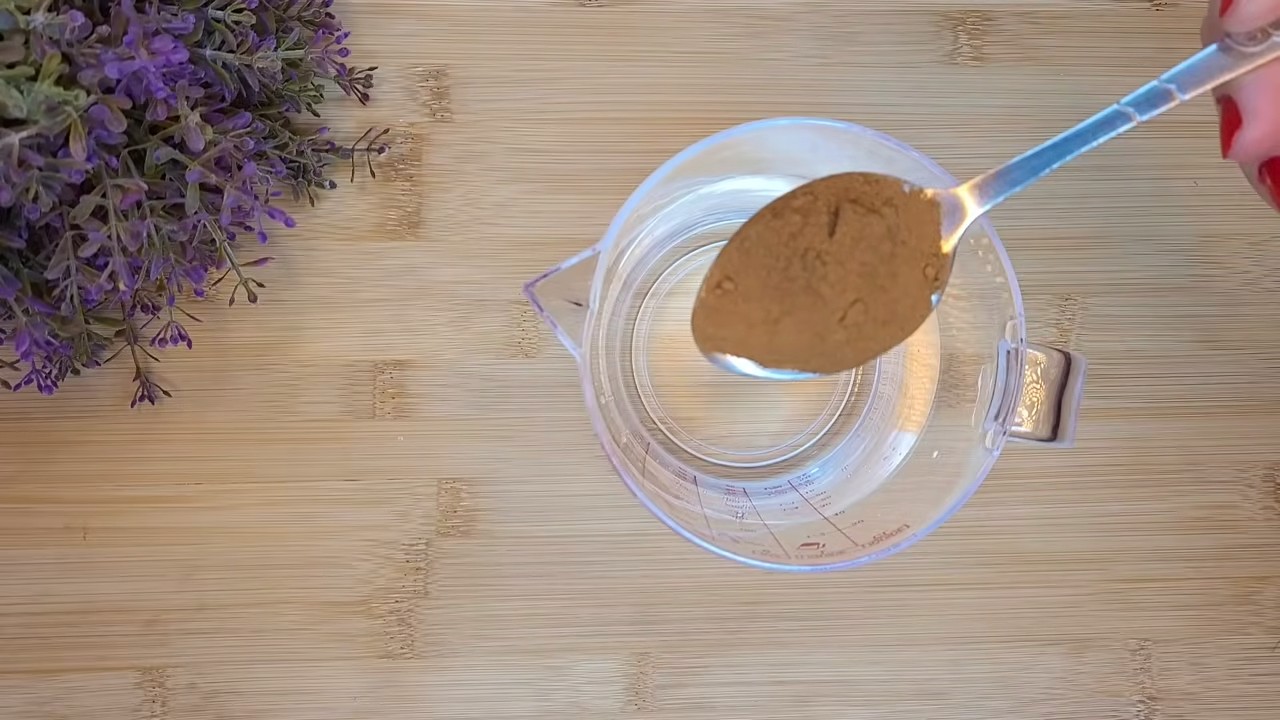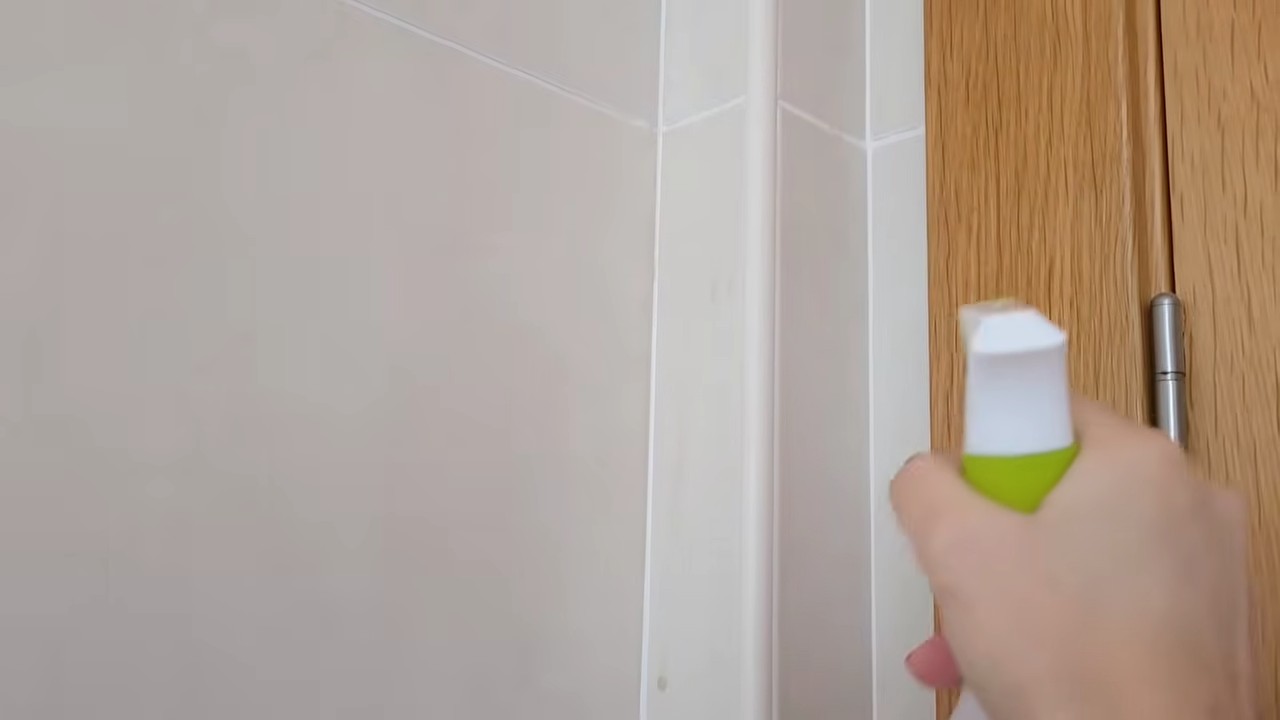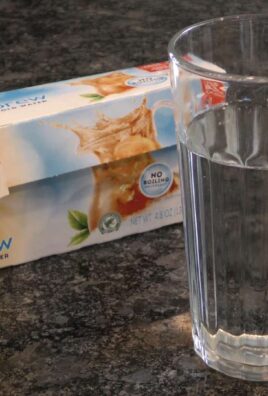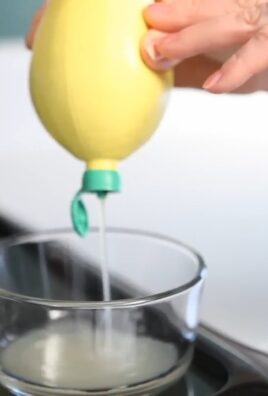Cinnamon Hacks and Uses: Unlock the secrets to a thriving home and garden with this incredible spice! Have you ever wondered if that fragrant cinnamon in your spice rack could do more than just flavor your morning coffee or apple pie? Well, prepare to be amazed! For centuries, cinnamon has been cherished not only for its culinary delights but also for its medicinal and even horticultural properties. From ancient Egypt, where it was used in embalming, to traditional Chinese medicine, cinnamon boasts a rich and fascinating history.
But what about today? In our modern world, where we’re all striving for a greener, more sustainable lifestyle, cinnamon offers a wealth of DIY solutions for your home and garden. I’m excited to share some of my favorite cinnamon hacks and uses that will help you keep your plants healthy, deter pests naturally, and even add a touch of warmth and fragrance to your living space.
Let’s face it, nobody wants to deal with pesky bugs munching on their precious plants or harmful chemicals polluting their gardens. That’s where cinnamon comes in! It’s a natural, effective, and delightfully aromatic alternative to harsh pesticides and fungicides. So, grab your cinnamon, and let’s dive into these simple yet powerful DIY tricks that will transform your home and garden!

Unlock the Magic of Cinnamon: More Than Just a Spice!
Hey there, fellow DIY enthusiasts! I’m so excited to share some amazing cinnamon hacks and uses with you. Cinnamon is one of my absolute favorite spices – not just for its delicious flavor, but also for its incredible versatility. Forget just sprinkling it on your toast; we’re diving deep into the world of cinnamon’s hidden talents! Get ready to be amazed!
Cinnamon’s Superpowers: A Quick Overview
Before we jump into the DIY projects, let’s quickly touch on why cinnamon is so awesome. It’s naturally antibacterial, antifungal, and antioxidant-rich. This makes it a fantastic ingredient for everything from cleaning solutions to beauty treatments. Plus, that warm, comforting scent is a natural mood booster!
DIY Cinnamon Air Freshener: Say Goodbye to Chemical Sprays!
Tired of those artificial air fresheners filled with mystery ingredients? Me too! This DIY cinnamon air freshener is super easy, smells divine, and is totally natural.
What You’ll Need:
* A small saucepan
* Water
* Cinnamon sticks (3-4)
* Orange peels (from 1-2 oranges)
* Whole cloves (1 teaspoon)
* Optional: Star anise, apple peels, vanilla extract
Step-by-Step Instructions:
1. Gather Your Ingredients: First things first, collect all your ingredients. I like to use leftover orange peels from my morning juice, so it’s a great way to reduce waste!
2. Combine in the Saucepan: Pour about 2 cups of water into your saucepan. Add the cinnamon sticks, orange peels, and cloves. If you’re feeling fancy, toss in a star anise or some apple peels for extra fragrance. A splash of vanilla extract can also add a lovely warmth.
3. Simmer on Low: Place the saucepan on the stove and bring it to a gentle simmer over low heat. The key here is to keep it simmering, not boiling.
4. Enjoy the Aroma: Let the mixture simmer for as long as you like, adding more water as needed to prevent it from drying out. The longer it simmers, the stronger the scent will be. I usually let mine simmer for a few hours, refilling the water every 30-60 minutes.
5. Safety First!: Never leave a simmering pot unattended. It’s also a good idea to open a window or two to ensure proper ventilation.
6. Alternative Method (Slow Cooker): If you prefer, you can also use a slow cooker. Simply combine all the ingredients in the slow cooker, set it to low, and let it simmer for several hours. This is a great option if you want to leave it unattended for longer periods.
Cinnamon Bug Repellent: Keep Pests Away Naturally!
Pesky ants and other insects driving you crazy? Cinnamon to the rescue! Cinnamon is a natural insect repellent, and this DIY solution is a safe and effective way to keep bugs at bay.
What You’ll Need:
* Ground cinnamon
* Cinnamon essential oil (optional, but recommended for extra potency)
* Cotton balls
* Small dishes or containers
Step-by-Step Instructions:
1. Identify Problem Areas: First, identify where the bugs are entering your home. Common entry points include cracks in walls, windowsills, and doorways.
2. Ground Cinnamon Barrier: Sprinkle a line of ground cinnamon along these entry points. The strong scent of cinnamon will deter most insects from crossing the barrier.
3. Cinnamon-Scented Cotton Balls: For extra protection, soak cotton balls in cinnamon essential oil (or sprinkle them generously with ground cinnamon). Place these cotton balls near the entry points, in cupboards, or anywhere else you’ve seen bugs.
4. Refresh Regularly: The scent of cinnamon will fade over time, so you’ll need to refresh the cinnamon barrier and cotton balls every few days or weeks, depending on the severity of the bug problem.
5. Cinnamon Spray (Optional): For a more potent repellent, you can make a cinnamon spray. Mix 1 teaspoon of cinnamon essential oil with 1 cup of water in a spray bottle. Shake well and spray around entry points, being careful not to spray directly onto furniture or fabrics. Always test in an inconspicuous area first.
6. Ants Beware!: I’ve found this method particularly effective against ants. They absolutely hate cinnamon!
Cinnamon Face Mask: A Spa Day at Home!
Cinnamon’s antibacterial and anti-inflammatory properties make it a great ingredient for a DIY face mask. This mask can help to reduce acne, brighten skin, and improve circulation.
What You’ll Need:
* 1 teaspoon ground cinnamon
* 2 teaspoons honey (raw honey is best)
* Optional: A few drops of lemon juice (for extra brightening, but be careful if you have sensitive skin)
Step-by-Step Instructions:
1. Combine Ingredients: In a small bowl, combine the ground cinnamon and honey. If you’re using lemon juice, add it now.
2. Mix Well: Stir the ingredients together until you have a smooth paste.
3. Patch Test: Before applying the mask to your entire face, do a patch test on a small area of skin (like your inner arm) to check for any allergic reactions. Cinnamon can be irritating to some people.
4. Apply to Face: Apply a thin layer of the mask to your clean, dry face, avoiding the delicate eye area.
5. Leave On: Leave the mask on for 10-15 minutes. You might feel a slight tingling sensation, which is normal. However, if you experience any burning or excessive irritation, remove the mask immediately.
6. Rinse Off: Rinse the mask off with warm water and pat your skin dry.
7. Moisturize: Follow up with your favorite moisturizer.
8. Frequency: I recommend using this mask no more than once or twice a week, as cinnamon can be drying.
9. Important Note: If you have sensitive skin, start with a very small amount of cinnamon and gradually increase it as tolerated. You can also add a teaspoon of yogurt or avocado to the mask to make it more moisturizing.
Cinnamon Plant Protector: Give Your Green Friends a Boost!
Did you know cinnamon can also benefit your plants? It’s a natural fungicide and can help to prevent damping off in seedlings and protect against other fungal diseases.
What You’ll Need:
* Ground cinnamon
* Water
* Spray bottle
Step-by-Step Instructions:
1. Cinnamon Water Solution: Mix 1 teaspoon of ground cinnamon with 2 cups of warm water.
2. Let it Steep: Let the mixture steep for a few hours or overnight to allow the cinnamon to infuse the water.
3. Strain the Mixture: Strain the mixture through a coffee filter or cheesecloth to remove any solid particles. This will prevent the spray bottle from clogging.
4. Pour into Spray Bottle: Pour the strained cinnamon water into a spray bottle.
5. Spray Your Plants: Spray the cinnamon water onto the leaves and stems of your plants, paying particular attention to areas that are prone to fungal diseases.
6. Damping Off Prevention: When starting seeds, sprinkle a light dusting of ground cinnamon on the soil surface to prevent damping off.
7. Rooting Hormone (Optional): You can also use cinnamon as a natural rooting hormone. Dip the cut end of a stem cutting in ground cinnamon before planting it in soil.
8. Frequency: I usually spray my plants with cinnamon water every 1-2 weeks as a preventative measure.
Cinnamon Cleaning Power: A Natural All-Purpose Cleaner!
Skip the harsh chemicals and create a natural all-purpose cleaner with the power of cinnamon! This cleaner is great for wiping down countertops, cleaning floors, and freshening up your home.
What You’ll Need:
* 1 cup white vinegar
* 1 cup water
* 10-15 drops cinnamon essential oil
* Spray bottle
Step-by-Step Instructions:
1. Combine Ingredients: In a spray bottle, combine the white vinegar, water, and cinnamon essential oil.
2. Shake Well: Shake the bottle well to ensure that the ingredients are thoroughly mixed.
3. Spray and Wipe: Spray the cleaner onto the surface you want to clean and wipe it down with a clean cloth.
4. Vinegar Scent: The vinegar scent will dissipate quickly, leaving behind a pleasant cinnamon aroma.
5. Test First: As with any cleaning product, it’s always a good idea to test the cleaner on a small, inconspicuous area first to make sure it doesn’t damage the surface.
6. Not for Everything: Avoid using this cleaner on delicate surfaces like marble or granite, as vinegar can etch these materials.

Conclusion
So, there you have it! A treasure trove of cinnamon hacks and uses that extend far beyond just sprinkling it on your morning toast. From transforming your garden into a thriving oasis to creating a spa-like atmosphere in your home, cinnamon’s versatility is truly remarkable. We’ve explored how this humble spice can act as a natural rooting hormone, a potent pest repellent, a fragrant air freshener, and even a skin-soothing ingredient.
The beauty of these DIY tricks lies in their simplicity and accessibility. You likely already have cinnamon in your pantry, making it an incredibly cost-effective and eco-friendly alternative to many commercial products. Why spend a fortune on chemical-laden solutions when you can harness the power of nature with a dash of cinnamon?
But don’t just take our word for it. We wholeheartedly encourage you to experiment with these cinnamon hacks and discover their magic for yourself. Start with something simple, like adding a cinnamon stick to your humidifier to infuse your home with a warm, inviting aroma. Or, try sprinkling cinnamon around your seedlings to protect them from pesky insects.
For those feeling a bit more adventurous, consider creating your own cinnamon-infused skincare products. A simple face mask made with cinnamon, honey, and yogurt can do wonders for brightening your complexion and reducing blemishes. Remember to always do a patch test first to ensure you don’t have any adverse reactions.
And speaking of variations, the possibilities are endless! You can experiment with different types of cinnamon, such as Ceylon or Cassia, to see which one you prefer. You can also combine cinnamon with other natural ingredients, like essential oils, herbs, and spices, to create custom blends that cater to your specific needs and preferences. For example, adding a few drops of clove or orange essential oil to your cinnamon air freshener can create a festive and invigorating scent.
The key is to have fun and be creative! Don’t be afraid to tweak these recipes and techniques to suit your individual needs and preferences. The most important thing is to embrace the power of cinnamon and discover its many benefits for yourself.
We are confident that once you experience the transformative effects of these cinnamon hacks, you’ll be hooked. You’ll find yourself reaching for that jar of cinnamon more often than you ever thought possible, not just for baking, but for a myriad of other uses around your home and garden.
So, go ahead, give these DIY tricks a try. We’re eager to hear about your experiences! Share your successes, your failures, and your own unique cinnamon creations in the comments below. Let’s create a community of cinnamon enthusiasts and unlock the full potential of this amazing spice together. Let us know how you are using cinnamon hacks in your daily life.
Frequently Asked Questions (FAQ)
Q: Is there a specific type of cinnamon that works best for these hacks?
A: While both Ceylon and Cassia cinnamon can be used, Ceylon cinnamon is often preferred for its milder flavor and lower coumarin content. Coumarin is a naturally occurring compound found in higher concentrations in Cassia cinnamon, and excessive consumption may be harmful to the liver. However, for most topical applications and small-scale uses, Cassia cinnamon is perfectly safe and effective. If you’re concerned about coumarin levels, opt for Ceylon cinnamon, especially for internal use or if you plan to use cinnamon frequently. Ultimately, the best type of cinnamon is the one you have readily available and enjoy the most.
Q: Can I use cinnamon essential oil instead of ground cinnamon for these hacks?
A: Yes, cinnamon essential oil can be used as a substitute for ground cinnamon in many of these hacks, but it’s important to use it with caution and dilute it properly. Cinnamon essential oil is highly concentrated and can be irritating to the skin if used undiluted. Always dilute it with a carrier oil, such as coconut oil, olive oil, or almond oil, before applying it to your skin. A general guideline is to use a 1-2% dilution, which means adding 1-2 drops of cinnamon essential oil per teaspoon of carrier oil. When using cinnamon essential oil for aromatherapy, use a diffuser and follow the manufacturer’s instructions. Avoid ingesting cinnamon essential oil unless under the guidance of a qualified healthcare professional.
Q: How often can I use cinnamon on my skin?
A: The frequency of using cinnamon on your skin depends on your skin type and sensitivity. If you have sensitive skin, it’s best to start with a patch test and use cinnamon-based products sparingly, perhaps once or twice a week. If you have normal or oily skin, you may be able to use cinnamon more frequently, but it’s still important to monitor your skin for any signs of irritation, such as redness, itching, or burning. If you experience any irritation, discontinue use immediately. It’s also important to avoid using cinnamon on broken or irritated skin.
Q: Can I use cinnamon to get rid of ants in my house?
A: Yes, cinnamon can be an effective natural ant repellent. Ants are repelled by the strong scent of cinnamon, which disrupts their scent trails and makes it difficult for them to find food. To use cinnamon as an ant repellent, sprinkle ground cinnamon along ant trails, around entry points, and in areas where you’ve seen ants. You can also place cinnamon sticks in drawers, cabinets, and other areas where ants may be present. For a more potent solution, mix cinnamon essential oil with water in a spray bottle and spray it around ant-prone areas. Remember to reapply cinnamon regularly, as its effectiveness will diminish over time.
Q: How long does cinnamon last when used as a rooting hormone?
A: Cinnamon doesn’t actually act as a hormone, but it does help prevent fungal growth that can kill new cuttings. The antifungal properties of cinnamon can help protect cuttings from rot and disease, giving them a better chance of developing roots. To use cinnamon as a rooting aid, dip the cut end of the stem in ground cinnamon before planting it in soil or water. The cinnamon will help prevent fungal infections and promote healthy root growth. The cinnamon will remain effective as long as it is present on the cut end of the stem. You can reapply cinnamon if it washes off or if you notice any signs of fungal growth.
Q: Are there any precautions I should take when using cinnamon around pets?
A: While cinnamon is generally considered safe for pets in small amounts, it’s important to exercise caution and avoid excessive exposure. Some pets may be sensitive to cinnamon and experience mild irritation or allergic reactions. If your pet ingests a large amount of cinnamon, it may cause gastrointestinal upset, such as vomiting or diarrhea. It’s also important to keep cinnamon essential oil away from pets, as it can be toxic if ingested or applied to their skin. If you’re concerned about your pet’s reaction to cinnamon, consult with your veterinarian.
Q: Can I use expired cinnamon for these hacks?
A: While expired cinnamon won’t be harmful, it may not be as potent or effective as fresh cinnamon. Cinnamon loses its flavor and aroma over time, so expired cinnamon may not provide the same level of fragrance or antifungal properties. If you’re using cinnamon for culinary purposes, it’s best to use fresh cinnamon for the best flavor. However, for non-culinary uses, such as pest control or air freshening, expired cinnamon may still be effective, although you may need to use a larger amount to achieve the desired results.




Leave a Comment